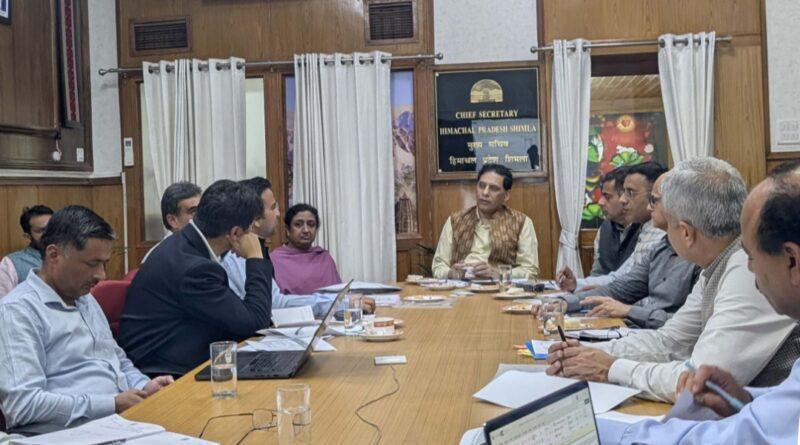 Image Source: Himachal Headlines
Image Source: Himachal Headlines
Key Highlights
On August 1, 2025, India Post Payments Bank (IPPB) announced the nationwide launch of an Aadhaar-based face authentication system targeting public distribution system (PDS) beneficiaries and banking customers, aiming to enhance security, convenience, and inclusion.
This biometric authentication leverages facial recognition technology developed by the Unique Identification Authority of India (UIDAI), allowing users to authenticate transactions and access services without the need for fingerprint scans or physical documents.
The face authentication service is designed to simplify beneficiary identification under government welfare schemes, reducing identity fraud and streamlining the delivery of subsidized food grains, medicines, and related entitlements under the PDS.
IPPB’s initiative promotes contactless, hygienic authentication at fair price shops (FPS) and banking correspondents, thereby improving accessibility for digitally and physically challenged populations across urban and rural India.
This launch is aligned with India’s broader vision of digitizing welfare delivery, ensuring transparency, and strengthening grievance redressal mechanisms through secure biometric modalities.
How Aadhaar-Based Face Authentication Works
The biometric system captures a live facial image of the beneficiary and matches it securely against the Aadhaar database using advanced AI-powered facial recognition algorithms ensuring high accuracy and speed.
This method eliminates dependency on fingerprint sensors, which can be prone to errors due to manual labor, wear and tear, or hygiene concerns, particularly among elderly or manual workers.
The authentication process involves explicit user consent and adheres to stringent privacy and data protection protocols as prescribed by UIDAI and government regulations.
AI models powering this face authentication verify liveness to prevent spoofing attempts, enhancing trustworthiness for sensitive transactions.
Impact on Public Distribution System and Inclusive Banking
Incorporating face authentication at FPS outlets resolves long-standing challenges of identity fraud, multiple claims, and wrongful disbursals in the PDS, safeguarding government subsidies meant for vulnerable populations.
Beneficiaries residing in remote, hilly, or underserved areas, or those with fingerprint difficulties, can now access their entitlements smoothly with minimal intervention, reducing wait times and administrative burdens.
IPPB’s banking correspondents equipped with face authentication devices broaden financial inclusion by facilitating account opening, transaction approvals, and welfare fund disbursement under schemes like PMJDY (Pradhan Mantri Jan Dhan Yojana) and direct benefit transfers (DBT).
The system supports the government’s target of a cashless, paperless, and biometric-first approach in public welfare administration, improving auditability and mitigating leakages.
Technology and Security Considerations
The facial recognition solution uses encrypted data transmission and on-device processing to maintain confidentiality and prevent unauthorized access.
Hardware deployed at FPS and banking correspondent points are certified by UIDAI standards, ensuring interoperability and reliable network connectivity even in low-bandwidth settings.
Multi-factor authentication provisions remain in place, providing fallback options such as OTP verification to enhance security.
Regular software updates and AI model retraining help maintain system robustness against evolving fraud attempts and demographic diversity.
Stakeholder Roles and Implementation Strategy
IPPB collaborates closely with the Ministry of Consumer Affairs, Food & Public Distribution, UIDAI, and state governments to ensure seamless integration of face authentication into existing PDS infrastructure.
Training programs have been conducted for FPS operators, banking correspondents, and field officers to handle the new technology effectively and provide beneficiary support.
Public awareness campaigns aim to educate citizens about privacy safeguards, consent rights, and the benefits of biometric authentication, fostering confidence in digital welfare services.
Real-time monitoring and feedback mechanisms have been instituted to track authentication success rates, user satisfaction, and address operational challenges promptly.
Broader Implications and Future Prospects
IPPB’s face authentication system sets a benchmark for other public services like health, education, and social security schemes to adopt biometric solutions for authenticating beneficiaries.
This move complements other biometric innovations, including video KYC, Aadhaar-based eKYC, and multi-modal biometric authenticators being explored by India’s banking and welfare sectors.
The adoption of face recognition technology aligns with the government’s Digital India initiative and advances the creation of a unified, secure digital identity ecosystem.
As the system scales, enhancements such as AI-enabled fraud detection, multilingual user interfaces, and offline authentication modes are expected to further strengthen inclusion and resilience.
Conclusion
The launch of Aadhaar-based face authentication by India Post Payments Bank marks a transformative leap toward modernizing India’s Public Distribution System and financial inclusion frameworks. By enabling secure, contactless, and efficient beneficiary verification, this innovation addresses critical bottlenecks in welfare delivery, safeguards subsidies, and empowers marginalized populations. As the utilization of face-based biometrics expands, it promises to deepen digital trust and catalyze a more transparent, accessible, and citizen-centric public service landscape in India.
Sources: Press Information Bureau (PIB)
Advertisement
Advertisement





